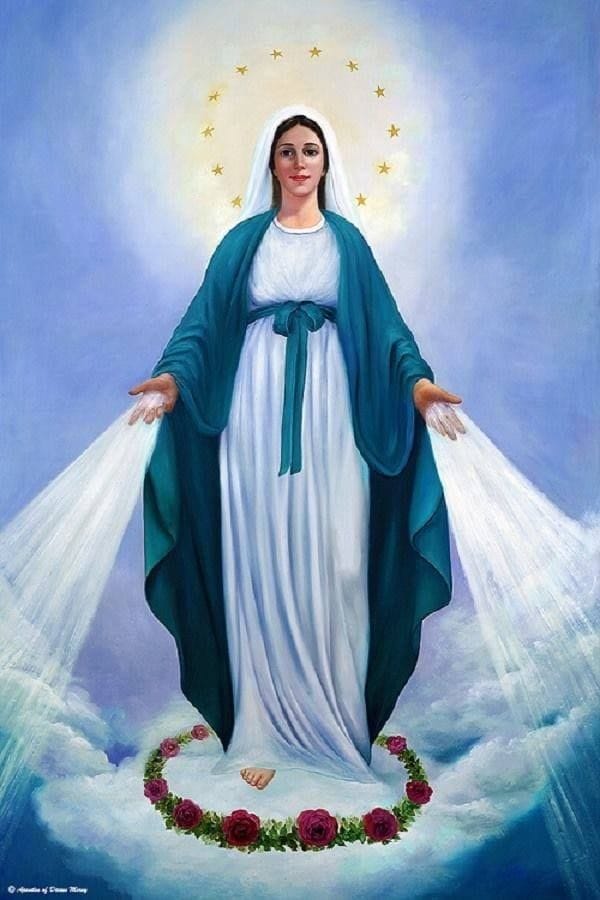Our Lady lights up a war-torn land


Edward E Dundon
Anthony is a London-based writer
On a warm spring night in April 1968, in the Zeitoun district of Cairo, Egypt, two workers saw a woman on the top of Saint Mary’s Coptic Church. The workers, thinking that she was about to jump from the roof, called the police who claimed the two men were witnessing a reflection from the street lamps.
But the light from the church dome, about fifty metres above ground, remained and the outline of the apparition became clearer. Onlookers claimed the light came from within her and not from around her, and while many were sure she was the Virgin Mary the apparition eventually faded.
The following week, the apparition reappeared, and locals were eager to see this holy sight, but she again faded before they assembled in the church grounds. A quarter of a million people had seen the visitation at irregular intervals over a three-year period and the sightings were soon accepted as the Virgin Mary by both Copts and Muslims. Mary is also recognised by the Muslim faith.
The church dates from 1924. Residents claim that Kalil Abraham, a landowner, had plans to build a hotel on the site. In 1918, the Blessed Virgin appeared to him in a dream and instructed him to erect a church in her honour. In return, she promised that Zeitoun would be the site of many miracles.
By early May 1968, Our Lady of Zeitoun or Our Lady of Light (Zeitoun means olive and refers to the vast expanses of olive trees that were planted there in the 18th and 19th centuries) became the focus of activity in Egypt and throughout the Middle East. Thousands thronged the streets around the church to see the apparition.
Sometimes she appeared surrounded by a halo of light and was also seen walking on the church roof. One onlooker, who had been present every night since April 2, claimed to have seen the Virgin with an olive branch in hand. Another witness said, “She was like a statue, hands folded in front, head veiled and bent. She rose up to the sky and was illuminated.”
On May 20, 1968, a similar apparition was seen at Saint Michael’s Church, in the Shubra district of Cairo. A crowd of over 10,000 people forced their way into the church and, in the disruption that followed, fifteen were trampled to death in the stampede. It was this incident that prompted the government to charge people to get near to where the apparitions were being seen.
In June 1968, the government had approved the apparitions and published brochures about the events at Zeitoun. As the apparitions gained national and international news, journalists from the Middle East and Europe attended a press conference. An excerpt from the Patriarchate Report on the Apparition of Mary in the Ziotoun Church in Cairo, Egypt by Coptic Pope Cyril, stated:
“She sometimes appeared in a cloud of light and sometimes as a figure of light. Her apparitions were sometimes preceded with heavenly bodies shaped like doves moving at high speeds. The apparitions continued for long periods, up to two hours and fifteen minutes as in the dawn of Tuesday, April 30, 1968, where she appeared continuously from 2.45am to 5.00am. Thousands of people of different denominations and religions … observed the miracles.”
Representatives of the Coptic Patriarchate expressed the hope that the apparition could provide moral support for peace in the region, and that God, in His mercy, would yield victory for the Arabs over the Israelis.
Because of the political instability at the time, people regarded the apparitions as a token from God. In June 1967, Egypt was defeated in the Six-Day War: a conflict between Israel and Egypt, involving neighbouring countries Jordan, Syria. The scale of the conflict resulted in the loss of over 20,000 troops and the capture of strategic territories, such as the Sinai Peninsula and the Gaza Strip.
Following this defeat, President Nasser released his plans for the nation in what was known as the ‘March 30 Manifesto’, which called for ‘democracy in the country, as well as equality and establishment of a modern technological society in Egypt.’ This move by the government and the apparitions at Zeitoun contributed to general anxiety about the country’s future.
Many Egyptians considered that God was supporting them in their increasing tensions with Israel and Syria and, in the aftermath of the 1967 War, they needed assurances that peace would be restored.
By June 1968, people’s attitudes to the apparitions were changing, and many an Egyptian seemed to be more engaged in the tensions between religious and social groups in Egypt than the defeat in the 1967 war. The apparitions may have been the fulfilment of a dream for many Copts and, perhaps the conversion of Muslims in Egypt.
The Zeitoun apparitions were studied extensively by Cynthia Nelson, professor of anthropology at Cairo University. From her discussions with spectators, students at the scene and others who came to see the apparitions, she constructed a picture of what this phenomenon meant for Copts and Muslims.
According to Ms Nelson (1973) the Six-Day War represented a catalyst that exposed the pulsatile way society was behaving. “The appearance of the Virgin symbolises the disillusionment with secular explanations and a turning towards the religious … in terms of which it all makes sense,” she added.
The cures ranged from a man with a gangrenous finger that had healed spontaneously before surgery to amputate it, to a patient with a cancerous tumour that, at a check-up by his surgeon a few weeks later, had disappeared and been replaced by scar tissue. The patient had been to Zeitoun and prayed to the Virgin Mother.
In the aftermath of the 1967 War, Christians were persecuted while many prayed to Our Lady for peace in a land that was once so revered by the Holy Family.
On Monday we celebrate the feast of the Assumption of the Blessed Virgin Mary.
We encourage you to share and use this material on your own website. However, when using materials from Majellan Media’s website, please include the following in your citation: Sourced from www.majellan.media

